Sanitizing Your Well
Share
The Department of Agriculture recommends that when a well has iron bacteria or other slime-producing organisms, that the well be shock chlorinated (sanitized) periodically to prevent plugging of the water pump, pipes, pressure tank, and valves, with biofilm.
If plugging occurs, it will reduce your water flow-rate and pressure resulting in an inadequate supply of water. As a result, water-using devices such as, toilets, showers, washing machines, dishwashers, livestock-waterers, filters, softeners, etc. will not be able to function properly.
Periodic use of "Well-Sanitizer" tablets will ensure that the slim-producing organisms present in your well won't interfere with the proper operation of your water pump and water pressure system.
How To Sanitize a Water System
When a water system is infested with iron and/or sulfate-reducing bacteria, shock chlorination treatment is recommended to control these slime-producing organisms. This sanitizing procedure is easy to perform.
Calcium Hypochlorite Tablets are what is recommended rather than household bleach and other commercial solutions containing weaker concentrations of sodium hypochlorite. The chlorine content in these messy liquids ranges from 3 to 15 percent, and due to the unstable nature of these compounds the strength of the chlorine weakens so that at the time of use, they may not contain anywhere near the labelled amount of available chlorine.
This procedure of shock chlorination will work for wells with a nuisance bacteria problem. If the water still has a foul odour after chlorination, particularly in the case of sulfate-reducing bacteria, the entire procedure should be repeated as such an odour is a sign that not enough chlorine was used for sanitizing.
When the correct quantity of chlorine is used, raw well water will have a chlorine odour, but the odour will disappear shortly after the well has been pumping continuously.
Note: This procedure will not completely eliminate iron and sulfate reducing bacteria from your water system, but will hold it in check. Therefore, shock chlorination will have to be repeated from time to time, in order to control the problem. Aztec's Well-Sanitizer chlorinating pellets can be used for well water, storage tank, or cistern sanitization. The number of pellets used will depend on the amount of water in the system to be sanitized. To produce a 200 ppm chlorine concentration, use one-quarter (1/4) pound chlorination pellets for each 100 gallons of water in the system (1/4 lb/100 gall = 115 pellets or 1/2 cup). The table (see below) shows how many pellets to use per 100 feet of water in various diameter wells.
Drilled Wells and Large Diameter Bored Wells
- Store enough water to meet house hold and farm water needs for a minimum of 8 hours.
- Remove the cap or seal from the casing and measure the depth of the water in the well, then refer to the table (see below) to determine how many chlorine pellets should be used. In some instances removing the seal to measure the water can be a difficult task, and it is easier to estimate well and water depth from well log or other records.
- Remove the well cap and determine if there is an unobstructed path from the top of the well to the water level. If it is not possible to remove the well cap, remove vent or sanitization access plug.
- Drop one pellet into the well and listen to hear if it hits the water. If the pellet hits the water, drop 8 pellets into the well. These will sink to the bottom and sanitize the lower part of the well.
- Stir the remaining pellets for 30 seconds in a few gallons of warm water in a clean plastic pail. Cover the pail and let stand in a well ventilated area for 1 hour to dissolve the pellets. Then pour the solution into the well to sanitize the upper part of the well.
- Bypass water softener and filters and open each water outlet in the water system until you can smell chlorine present in the water. This procedure assures that all the water in your plumbing system is chlorinated. Caution: Iron particles, slime and organic materials may come loose from your plumbing system during the shock chlorination process. So be sure to put all equipment into by-pass to prevent from plugging the equipment.
- Allow the chlorinated water to stand in the system for at least six (6) hours, and preferably overnight. After this, open an outside faucet and flush the system until water runs chlorine free. Repeat flush operation on each faucet. Then return softener and filter by-pass valves back to the service position.
| Well Diameter - Inches | Cups of Pellets | Number of Pellets |
| 2 | 1/8 | 30 |
| 3 | 1/5 | 45 |
| 4 | 3/8 | 85 |
| 5 | 1/2 | 115 |
| 6 | 3/4 | 170 |
| 8 | 1 & 1/4 | 285 |
| 10 | 2 | 455 |
| 12 | 3 | 680 |
| 24 | 12 | 2725 |
